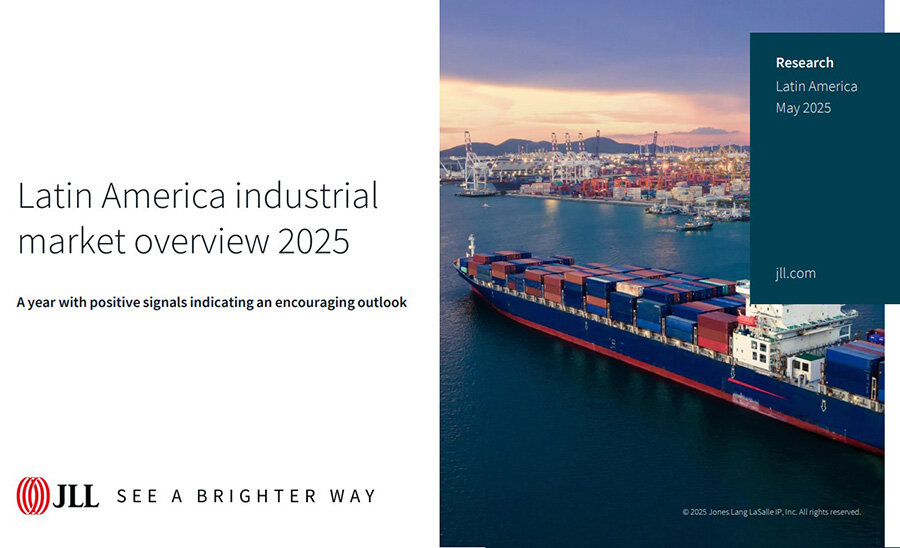читайте также
 Italy May End Tax Relief on Rental Income: What It Means for Landlords and Investors
Italy May End Tax Relief on Rental Income: What It Means for Landlords and Investors
 Luxury Travel Takes Off: How Demand Is Changing and Where to Find ‘Quiet Luxury’
Luxury Travel Takes Off: How Demand Is Changing and Where to Find ‘Quiet Luxury’
 Airbnb shifts all fees to property owners
Airbnb shifts all fees to property owners
 Most Punctual Airlines of September 2025: Who Arrived on Time and Why It Matters
Most Punctual Airlines of September 2025: Who Arrived on Time and Why It Matters
 Ten Years to a Passport: New Citizenship Rules in Portugal
Ten Years to a Passport: New Citizenship Rules in Portugal
 Top 25 World Economies 2025: Who Shapes Global Growth
Top 25 World Economies 2025: Who Shapes Global Growth
Latin America Strengthens Its Position in Logistics and Industrial Real Estate

The industrial and logistics real estate market in Latin America is showing steady growth, driven by strong demand for high-quality facilities, increasing investment inflows, and infrastructure breakthroughs. Experts from JLL analyzed key indicators across 17 major markets in the region, including Argentina, Brazil, Mexico, Colombia, and Chile.
The total stock of industrial space in the region has reached 87.3 million sq. m, growing by 25% over the past three years. In the last year alone, markets absorbed 5.2 million sq. m – about 6% of total inventory, reflecting stable demand. Brazil and Mexico dominate with a combined 76% market share: Mexico accounts for 48% and Brazil 28%. São Paulo remains the largest market with 17.6 million sq. m, while Monterrey leads in dynamics, adding 4.3 million sq. m over three years.
The average vacancy rate across Latin America is 7.2%, with 15 out of 17 analyzed cities below 10%. The lowest levels are seen in Santo Domingo, Guatemala City, and Bogotá – under 3%. Such limited supply is driving rental growth, particularly for Class A properties. In 2024, rental rates rose by an average of 3.2%, with Mexico City and Tijuana recording spikes of 20% and 19% respectively. The highest rent was recorded in Puerto Rico – $10.8 per sq. m, a 9.1% year-on-year increase.
With limited new construction in several countries (notably São Paulo and Lima), competition for quality space is intensifying, pushing rents higher and boosting pre-leasing activity. In São Paulo, pre-leased projects account for 15.5% of stock, while in Mineras this share reached 43%. Despite a record supply of 542,000 sq. m added in Mineras in a single year, vacancy climbed to 13.6% – the region’s highest. Overall, 6.1 million sq. m of new supply entered the market in 2024, up 8% year-on-year, led by Mexico City (1.5 million sq. m) and Monterrey (1.3 million sq. m).
Institutional participation is also rising. On the largest markets, particularly in Mexico and Brazil, international funds and developers are strengthening their positions. Prologis, for example, more than doubled its presence in Mexico by integrating Terrafina’s assets. The growing interest of global players reflects both the maturity of the segment and rising standards of logistics infrastructure.
Infrastructure projects are playing an increasing role in transforming the logistics landscape. The Panama Canal, despite challenges of drought and geopolitical risks, remains a key global trade hub, handling 6% of global maritime cargo turnover. Revenues are expected to recover to $5.6 billion in 2025. In Peru, the construction of the $3.6 billion Chancay port is accelerating the creation of a new industrial cluster and could cut shipping times between South America and Asia by 25%.
Central America is also experiencing strong momentum. In San José, Costa Rica, vacancy has dropped to 1.7%, while premium rents reached $7.8 per sq. m. In Guatemala and Panama, Class A space is virtually unavailable, shifting demand toward custom-built projects. In the Dominican Republic, the market is composed only of Class B warehouses, but despite limited supply, rents are approaching levels seen in more developed markets – $7.5 to $9 per sq. m.
According to JLL Clock, most regional markets are in the rental growth phase, with São Paulo, Bogotá, Lima, and Mexico City showing particularly strong momentum. This phase is characterized by high competition for quality assets and limited new construction, intensifying pressure on the market.
The market is rapidly evolving under both global and local influences. Investors are increasingly targeting logistics assets due to the rise of e-commerce, higher quality standards, and the growing importance of nearshoring (bringing production closer to consumer markets). In countries with stable macroeconomic conditions – such as Chile, Peru, and Costa Rica – new logistics corridors are forming, while infrastructure modernization, from roads to ports, is opening opportunities for expansion. ESG considerations are also becoming more relevant: while hydropower still dominates renewable energy (70%), solar and wind power are growing rapidly in Mexico, Chile, and Argentina, boosting the long-term ESG appeal of logistics projects.
Looking ahead to 2025–2026, rental growth is expected to continue, particularly in the premium segment, alongside declining vacancy rates across most markets. New players are likely to enter Chile and Peru, while construction in logistics clusters such as São Paulo, Guadalajara, Santo Domingo, and Lima will accelerate. At the same time, regions with high new supply, like Mineras, will face the challenge of balancing demand and supply to maintain pricing stability.
Подсказки: Latin America, logistics, industrial real estate, Mexico, Brazil, JLL, vacancy, rental growth, Panama Canal, Chancay port, Monterrey, São Paulo, ESG, nearshoring, infrastructure





